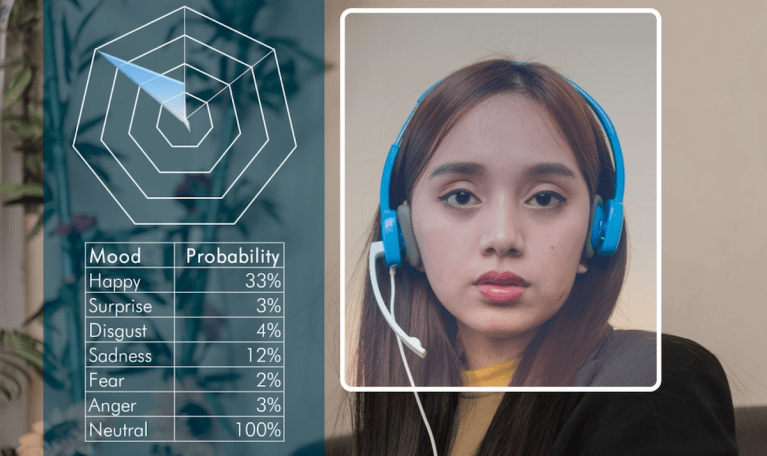
In an era where artificial intelligence is reshaping industries and daily life, a new frontier is emerging: Emotion AI, also known as affective computing. This technology aims to bridge the gap between human emotions and machine intelligence, changing how we interact with computers and digital systems.
Emotion AI encompasses a range of technologies designed to detect, interpret, and respond to human emotional states. These systems use computer vision, voice analysis, biometric sensors and advanced algorithms to discern users’ feelings and moods, opening up new possibilities for personalized and empathetic digital experiences.
The foundations of this field trace back to the late 1990s, with pioneering work by researchers like Rosalind Picard at the MIT Media Lab. However, recent advancements in machine learning and sensor technologies have accelerated progress, attracting interest from tech giants and startups alike.
At its core, Emotion AI analyzes various inputs that can indicate emotional states. Facial expression recognition, a key component, uses computer vision algorithms to detect subtle changes in facial muscles and map them to emotional categories. For instance, a slight brow furrow might indicate confusion, while widening the eyes could suggest surprise.
Voice analysis is another crucial element. AI systems can infer emotional states from speech by examining pitch, tone, speed and other vocal characteristics. Cogito, a Boston-based company, has deployed its voice analysis technology in call centers for major insurance companies. Their system provides real-time feedback to customer service representatives, alerting them to changes in a customer’s emotional state and suggesting appropriate responses.
Physiological sensors add another layer of data. Wearable devices like the Empatica E4 wristband can monitor heart rate variability, skin conductance and other biometric indicators correlating with emotional arousal. Combined with different inputs, these readings can provide a more comprehensive picture of a user’s emotional state.
Emotion AI has the potential to impact a wide range of industries. In healthcare, it could assist in mental health monitoring and early detection of conditions like depression or anxiety. Ellipsis Health, a San Francisco startup, is using voice analysis to screen for depression and anxiety in clinical settings. Their technology analyzes a patient’s speech during a short conversation to identify potential mental health issues.
The automotive industry is investigating Emotion AI for driver monitoring systems. These systems could enhance road safety by detecting fatigue, stress or distraction signs. Affectiva has partnered with BMW to develop in-cabin sensing technology that monitors driver state and behavior. The system can detect drowsiness by analyzing eye closure, head pose and other facial cues.
In the education realm, Emotion AI could personalize learning experiences by adapting content and pacing based on a student’s emotional engagement. Century Tech, a U.K.-based tech company, incorporates emotion recognition into its AI-powered learning platform. The system uses webcam data to analyze students’ facial expressions and adjust lesson difficulty in real time.
The marketing and advertising sectors see potential in Emotion AI for measuring audience reactions to content and products. Unilever has used Affectiva’s facial coding technology to test consumer responses to advertisements, helping to refine their marketing strategies and predict ad performance.
Despite its potential, Emotion AI faces challenges and ethical concerns. Critics argue that human emotions are too complex and nuanced to be captured accurately by current AI systems. One study found that facial expressions and other nonverbal cues provide surprisingly little insight into a person’s emotional state, challenging some of the fundamental assumptions of Emotion AI.
Privacy advocates raise concerns about the invasive nature of constant emotional monitoring. The idea of AI systems continuously analyzing facial expressions, voice patterns and physiological data raises questions about consent, data security and potential misuse. In 2019, Microsoft’s AI ethics committee reportedly advised against using the company’s emotion-recognition technology in law enforcement body cameras due to concerns about reliability and potential bias. In May, Microsoft added facial recognition to that ban.
There are also worries about the technology’s reliability and the consequences of misinterpretation. In high-stakes scenarios, such as job interviews or security screenings, errors in emotion recognition could have profound implications for individuals. HireVue, a company that uses AI to analyze video interviews, faced criticism and a complaint to the Federal Trade Commission in 2019 over concerns about the scientific validity of its emotion analysis technology.
The market for Emotion AI is projected to grow in the coming years. The global affective computing market is expected to reach $37.1 billion by 2026, up from $12.9 billion in 2019. Major tech companies like IBM, Microsoft and Amazon have all invested in developing Emotion AI capabilities, indicating the technology’s perceived importance in future AI applications.